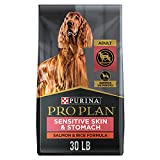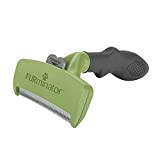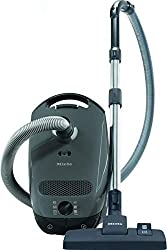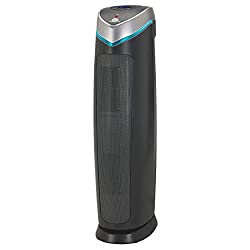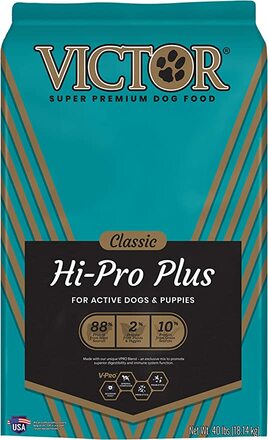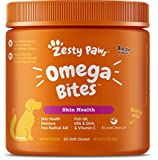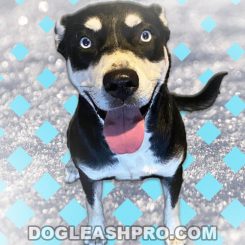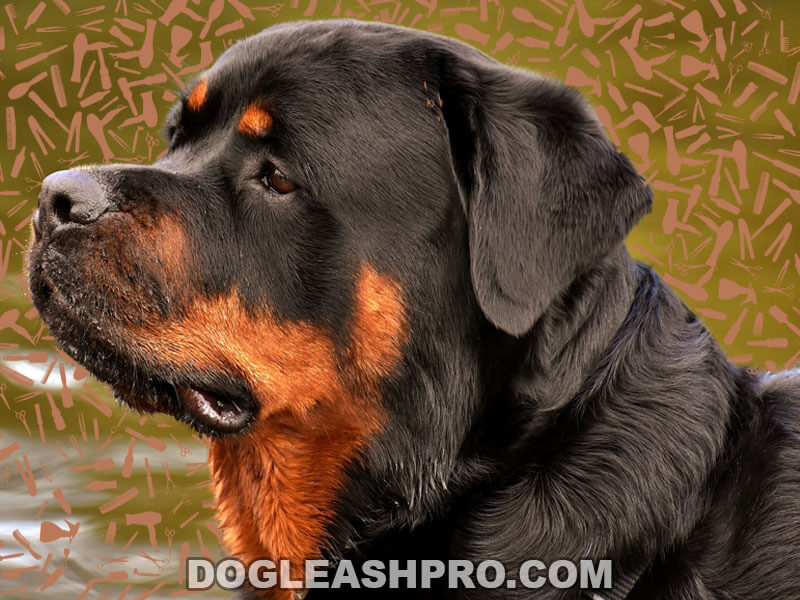
Do Rottweilers Shed? Yes, Rottweilers do shed. They shed reasonably throughout the year and experience heavy shedding during the spring and fall seasons, making them moderate-to-high shedders. Rotties have smooth double coats, making their shedding easier for owners to manage.
Rottweilers have been around since the Roman empire and their popularity has remained strong. These canines are well-known for their calm temperament and eagerness to please their owners. However, Rotties are also well-known for their shedding spells.
If you’re thinking of bringing home a Rottweiler and want to learn more about his shedding qualities, we’ve got good news. This article will cover all aspects of the breed’s shedding timeline, stages, and intensity. There’s also a helpful tips section to help dog parents control their Rottweiler Shedding.
Table of Contents
Do Rotweilers Shed?
Yes, Rottweilers do shed. In fact, Rotties are moderate-to-high shedders. They experience nominal shedding during the year, but the intensity increases during the shedding season.
However, it’s easier to manage the shedding episodes of this breed because their two-layered coat is smooth and medium-length.
Do Rottweilers Shed a lot?
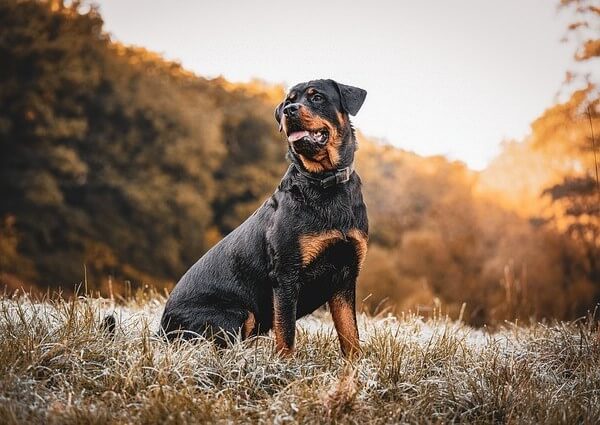
So, do Rotties Shed a lot? Yes, compared to other dog breeds like the American Bulldog or the Bichon Frise, Rottweilers do shed a lot.
But the thing to remember about the Rottweiler Shedding a lot is that their shedding is easier to control and contain compared to canines like Akitas or Huskies.
That’s because Rotties have smooth, medium-haired, double coats. Moreover, the breed only has an undercoat around the neck and thigh regions.
Canine experts consider Rotties moderate-to-high shedders because they only experience heavy shedding before summer and winter.
This means Rottweiler Shed a lot during certain times of the year and sheds reasonably throughout the year.
What is Rottweiler?
The Rottweiler is one of the oldest dog breeds in the world. Their history can be traced to the Roman Empire, where they were used to herd cattle and guard properties.
Rotties are medium-to-large canines with a heavy-set frame and strong musculature. They’re famous for their good and obedient nature, making them easy to train.
Where are Rottweilers from?
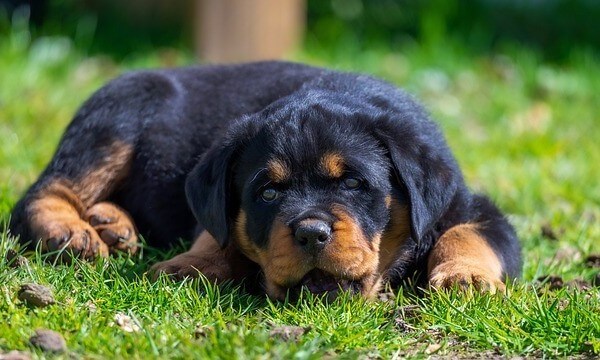
So, where do Rottweilers come from? And how do their origin affect their coat and shedding levels?
Rottweilers are said to have descended from the town of Rottweil during the second century C.E. The area is now a part of modern-day Germany.
Do Rottweilers like cold weather?
It’s not possible to say whether Rotties like cold weather with certainty. The fact is Rottweilers can withstand cold weather to some extent, thanks to their double-coat fur.
However, temperature below 20°F is considered too cold for your Rottweilers to handle and puts them at risk of hypothermia.
If you have to walk your Rotties in the winter when the temperature drops below 20°F, we highly recommend that you get your K9 friends a winter coat so they stay warm and active during the cold season.
Rottweiler Shedding stages
Rottweiler shedding is linked to their hair lifecycle and undercoat shedding (also known as the seasonal shed). Here’s how the two differ.
Hair Lifecycle
The moderate hair fall Rotties undergo outside of the shedding season has to do with the completion of the hair cycle.
Once the process is complete, the old hair follicle detaches to makeroom for new growth. The phases of the hair lifecycle include the following:
- The anagen phase is when the fur on your Rottie’s body is actively growing.
- The catagen phase occurs when the hair follicles stop growing.
- The telogen phase is when the old hairs fall off and are replaced by new growth.
Seasonal Rottweiler Shedding
Undercoat shedding or seasonal shedding occurs when the seasons change (when winter gives way to spring, and summer turns to fall). This happens to prepare your dog’s coat for temperature changes and variations.
Seasonal sheds are heavier because it results in increased hair fall from the undercoat. Undercoat hair is dense, woolly, and likelier to stick to fibers, clothing, beddings, carpet, hardwood flooring, furniture, and other surfaces.
That’s why seasonal shedding for long-haired breeds like the Labradors or the German Shepherds can become a hassle.
Are Rottweilers double coated?
Yes, Rottweilers are double-coated canines. Their fur includes two layers of hair.
The first coat of hair (called the topcoat) contains slightly rough, medium-length hair.
The second layer (called the undercoat) includes a dense layer of soft wool-like hair that’s weather-resistant.
Rottie puppies generally shed their puppy coat at the 5-month mark. During this time, they can experience high shedding and look patchy in certain places. It takes the pups an additional six months to grow their full adult coat (including the top and undercoat).
As adults, Rottweilers will undergo heavy sheds twice a year during the spring and fall. During this time, you can expect your fur baby to lose significant amounts of hair from his undercoat as he prepares to adapt to the changing seasons.
For example, the Rottweiler winter coat will have full-grown hairs in both fur layers to protect the dog from the cold.
The rest of the time, Rotties can experience medium-intensity shedding from the top and undercoat due to the completion of the hair lifecycle.
Rottweiler pros and cons
Are you unable to make up your mind about whether or not you can handle your Rottweiler Shedding? If so, this section is for you. We’ve compiled a table of the pros and cons of Rottweiler Shedding to help make your life easier.
Ready?
| Pros | Cons |
| Seasonal shedding help Rotties prepare for the changing weather. This helps keep them in good health. | Heavy undercoat hair fall during seasonal shedding can be intimidating for first-time owners. |
| Moderate shedding throughout the year is easy to clean up. | As average shedders, Rotties aren’t hypoallergenic and may be problematic for people with dog allergies. |
| Rotties have medium-length double coats, which helps reduce the intensity of shedding outside the spring and fall seasons. | Rotties will require more grooming during the shedding season to avoid making a mess at home. |
| Shedding helps improve coat and skin health. | Tidying up after Rottweilers can be time-consuming and laborious. |
How bad Do Rottweilers Shed?
Rottweilers are medium-to-high shedders. The breed’s seasonal shedding gets pretty intense for dog owners at the one-year mark because that is when pups develop their adult coats.
Aside from that, Rotties undergo nominal shedding throughout the year, too. This puts Rottweilers in the middle of the shedding spectrum, with Akitas and Corgis shedding on one end and Poodles and Basenjis shedding on the other.
How much Do Rottweilers Shed?
Do Rottweilers Shed much? There’s no simple way to answer this question. Canine shedding is a natural phenomenon and tends to pick up speed during the fall and spring.
The heavier a dog’s coat is (especially the undercoat), the more you can expect him to shed. Rotties undergo significant shedding during heavy shedding seasons, but it’s not as bad as some other dog breeds.
Rottweiler Shedding level
According to the American Kennel Club (AKC), Rottweiler shedding gets three out of five points (with five being awarded to the heaviest shedders). That means that while Rotties aren’t low shedders, their shedding level isn’t off the charts.
Canine enthusiasts can easily manage Rottweilers’ blowing coat with a strict grooming regimen to reduce the spread of molting.
Genetics that influence Rottweiler Shedding
Geneticists have discovered that several genes control the tendency of canine shedding. For example, the MC5R gene has two variants. Its G-variant is linked to increased shedding in canines.
Dogs with one copy of this variant are high shedders, and dogs with two copies of the variant experience even higher levels of shedding.
Another gene linked to shedding is the RSPO2, and it also has mutations linked to high and low shedding. Genetic tests that identify a canine’s shedding tendencies test for MCR5 and RSPO2 because shedding levels depend on these genes and the mix of variants.
Experts state Rotties carry the ancestral MC5R gene, which is why they’re moderate-to-heavy shedders that experience increased shedding during the fall and spring.
When Do Rottweilers Shed?
So, when Do Rottweilers Shed the most?
Rotties undergo heavy seasonal shedding during the spring and the fall. Besides that, they shed moderately all year round.
If you’re curious about what coat layer sheds during seasonal molts, you’ll be happy to know that Rotties mainly experience undercoat shedding.
The topcoat consists of slightly coarse, medium-hair fur, which does shed moderately as the hair cycle continues. But, when it comes to coat blowing, pet parents need only be concerned about the undercoat and direct their grooming efforts to the neck and thigh areas to reduce shedding.
How long Do Rottweilers Shed for?
Seasonal molts can last anywhere from two to four weeks. If you’re trying to prep for your Rottie’s upcoming high shedding season, you’ll want to keep a one-month time frame in mind.
Once the four weeks are up, you’ll notice a marked decrease in your Rottweiler’s shedding.
How often Do Rottweilers Shed?
You can expect Rottweilers to undergo two heavy shedding spells every year. These generally occur between the months of March to May and September to November.
Rottweiler shedding season
If you’re still a little iffy about the timeline of a Rottweiler’s shedding schedule, don’t stress. This section contains a table to help you keep track of the seasons when your Rottie will experience coat blowing.
| Seasons | Shedding Intensity |
| Spring | High. |
| Summer | Low-to-moderate. |
| Fall | High. |
| Winter | Low-to-moderate. |
Are Rottweilers hypoallergenic?
No, Rottweilers are not hypoallergenic. In fact, there’s no such thing as a hypoallergenic Rottweiler. Rotties are mild-to-high shedders, which means they shed plenty of pet hair and dander when they blow out their coat.
If you’re wondering, “Is a Rottweiler hypoallergenic?” the quick answer is no, Rottweilers are not hypoallergenic. Many folks may think that the Rotties are hypoallergenic because they appear to have short-hair coats. That leads many to think that Rottweiler hypoallergenic go hand-in-hand.
Nonetheless, the truth is that this breed of majestic canines is a far cry from being hypoallergenic and should be avoided by owners with serious allergy concerns.
WANT MORE INFORMATION? Are Rottweilers Hypoallergenic? 15 Tips To Reduce Dog Allergy Around Your Home
Are Rottweilers bad for allergies?
It’s important to note that no dog is 100 percent hypoallergenic. If you have severe pet allergy, you may want to opt for a low-shedding dog breed since they tend to spread less dander and dried saliva (a known canine allergen).
Rottweilers qualify as moderate-to-high shedders, which means they are neither the worst choice nor the best choice for allergy sufferers.
What truly matters when deciding on a dog breed with allergies in mind is how sensitive your allergy problems are.
If you’re highly sensitive to pet hair, dander, and dried saliva, it’s best not to take any chances and opt for low-shedding canines. On the other hand, if you prefer the Rottweiler breed and you’re adamant about getting a Rottie, you can gauge your allergic reaction to the breed by spending some time with one before bringing him home.
Rottweiler coat types and colors
No Rottie-centric guide can be complete without discussing the Rottweiler coat and color types. And that’s precisely what this section is all about. Scroll down to learn more.
The topcoat of Rottweilers is slightly rough-textured and medium-length. It tends to lie flat and appears straight.
Their undercoats are present around the neck and thighs and have a dense and soft texture.
It is known that wavy, really short, or long coats in this breed are considered serious faults and may result in disqualification in dog shows.
Long haired Rottweiler
Long haired Rotties, also known as hairy Rottweilers, are generally the result of a genetic variation. These canines aren’t a hybrid, as some assume, and have a fluffy, long-haired top coat.
Hairless Rottweiler
Hairless or bald Rottweilers, as the name suggests, have very short coats or no fur on their bodies. This coat variation can be linked to a genetic mutation or a hair disease, like alopecia.
Curly haired Rottweiler
Curly-haired Rotties have long-length top coats, but the hair is wavy instead of straight. These Rottweilers can have the customary markings, but they look very different from standard Rotties due to their coat type.
Coat Colors
According to the AKC breed standard, the three recognized Rottweiler colors are black and mahogany, black and tan, and black and rust. The difference between mahogany, rust, and tan is the color intensity.
Mahogany is a rich brown shade, whereas rust is slightly lighter than the former. Tan is the lightest of brown shades in this breed and is also rarer. Acceptable undercoat colors include tan, black, or grey.
You may also see red or blue Rottweilers, but dog registries don’t recognize these colors. The blue Rottweilers have a grey or silver coat color rather than the actual blue color that we know.
RECOMMENDED: Blue Heeler Rottweiler Mix (Complete Guide)
Rottie markings (as per the AKC) need to include spots over each eye and on the cheeks. There should be a strip on either side of the muzzle and a triangular mark on the prosternum (bone around the rib cage).
Why is my Rottweiler shedding so much?
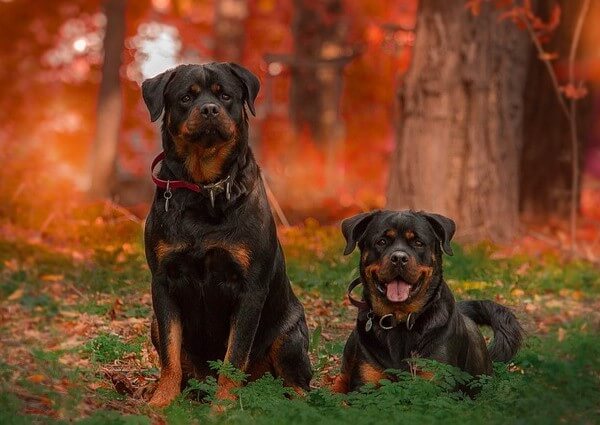
Despite being medium-to-high shedders, Rottweilers can shed excessively due to an external factor. If you’ve noticed a sudden increase in your Rottweiler’s shedding, this section can help you identify the cause.
Here are some of the most common concerns behind a Rottie shedding more than usual.
Nutrient Deficiency
Diet plays a crucial role in maintaining the overall health of your canine. That also includes skin and coat health. If your furry companion’s diet is lacking in essential fats, proteins, vitamins, or minerals, it can have a direct impact on a Rottie’s coat and lead to an unnatural rise in shedding intensity.
For example, zinc and copper deficiencies can lead to hair loss and bald patches. Dog parents can invest in good-quality pet food brands to avoid unhealthy shedding. These are specifically formulated according to your pet’s breed, size, and health to meet all their nutrient requirements.
It’s also a good idea to refer to your veterinarian about suitable coat health supplements, such as omega-3 fatty acid, omega-6 fatty acid, and flaxseed oil, to make sure your Rottie’s skin is healthy and supple.
ALSO READ: How to Get Your Dog to Eat When Sick
Dehydration
Dehydration in canines can be problematic for several reasons. Apart from being a danger to your fur baby’s overall health, dehydration can also affect his skin and coat health. If your furry friend’s body is running low on fluids, it can dry out his skin and affect hair follicles or weaken them.
READ NEXT: What Can Dogs Drink Besides Water?
Parasites on your Rottweiler
Mites and fleas are pretty common in a pet-friendly household. But, these parasites can affect your Rottie’s health in several ways over time.
Apart from weakness and lethargy, flea or mite infestations can cause hair loss or hair thinning in canines. The good news is you can help rid your pet of such infestations with a quick visit to your vet.
The veterinarian will likely utilize anti-flea sprays to remove the parasites and their eggs. This will help prevent them from multiplying.
Alternatively, you can invest in organic and dog-friendly anti-flea shampoos that include active ingredients to remove fleas, larvae, and eggs. Remember to pick a shampoo with ingredients that also soothe, moisturize, and promote skin health, like oatmeal or cocoa.
It’s also a good idea to invest in a vacuum cleaner to help get rid of pests from your carpet, hardwood flooring, sofas, furniture, and upholstery. This will keep your K9 companion from being re-infected again.
RELATED: Engorged Tick Fell Off Dog (Here’s What To Do!)
Rottweiler allergies
Just like humans, canines can also develop allergies. These allergies can affect your Rottie’s skin and lead to hair loss. You can help your dog avoid such problems by ensuring his surroundings are clean and allergen-free.
Investing in a HEPA air filter is a great start. These filters can remove 99.9% of pollutants from the air, making your indoor air quality clean and beneficial for you and your furry friends.
You may be interested in: Are Hostas Poisonous To Dogs?
Rottweiler skin allergies
Some Rotties have sensitive skin and can be susceptible to several allergens. This includes dust, pollen, insect bites, flea bites, or cleaning products.
If your canine displays symptoms like excessive licking, hair loss, red or inflamed skin, and excessive scratching, there’s a good chance it’s suffering from a skin allergy.
The best course of action is to book an appointment with your vet in such circumstances. The veterinarian might have to run a few tests to pinpoint the allergen and advise treatments accordingly.
CHECK OUT: Why Is My Dog Licking The Floor?
Rottweiler food allergies
Rotties can develop skin allergies due to allergens in their diet. According to VCA Animal Hospitals, here are some of the common food allergies in Rottweilers.
Turkey: Canines can develop allergies to turkey meat when their digestive system cannot break down the protein entirely. When this happens, cells in the intestines (enterocytes) treat the protein as an intruder and trigger an immune response.
Chicken: Pet parents often think chicken meat is the easiest for their furry companions to digest. This is generally true, but Rotties have sensitive stomachs that can act out without any reason. Rottweilers can develop an allergy to chicken meat in much the same way as turkey meat.
DON’T MISS: Can Dogs Eat Chicken Nuggets?
Dairy: Adult dogs are generally lactose intolerant because they don’t have the lactase enzyme to break down the natural sugar (lactose) that’s found in milk. Feeding even the smallest amount of cheese, cream, or milk to your Rottie can directly or indirectly result in stomach upsets.
You may also like: Can Dogs Drink Ensure? Can I Give My Dog Ensure?
Best dog food for Rottweiler with allergies
If you’re on the lookout for the best dog food for Rottweilers with allergies, you might want to learn more about the Purina Pro Plan Sensitive Skin and Stomach Dog Food With Probiotics for Dogs. The food is a salmon and rice formula, making it safe for Rotties sensitive to poultry protein.
Besides that, Purina’s Pro Plan dog food also includes pre and probiotics to promote digestion, gut health, immunity, and gut flora. The formula uses sunflower oil, a rich omega-6 source to promote skin health.
There’s also fish oil for omega-3 fatty acid and antioxidants to boost your furry friend’s immune system.
Finally, the food is free of fillers like soy, corn, and other additives that can trigger reactions in canines. It’s no wonder dog parents consider this product as one of the best food for Rottweiler with allergies.
Changes in routine
Rottweilers may look like nothing bothers them, but they can be very sensitive too. One of the things that can easily trigger this breed is a change in routine. Even something as minor as delays in mealtime or playtime or the changing of food or water bowls can be a stressor.
That may not seem very harmful, but stress can impact your Rottie’s health in various ways, including deteriorating coat health and hair loss.
Stress and anxiety
Anxious dogs can equal stressed dogs. Besides changes in routine, Rotties can also be stressed out or anxious when they’re left alone for long periods of time, enters a new home and is unfamiliar with the space, or simply not exercising.
However, the quickest way to tell if your fur baby is stressed is by looking for red flags like whining, barking, pacing, drooling, and shedding.
RECOMMENDED: Do Dogs Get Tired Of Barking?
To get your Rottweiler back to optimal health and help control the shedding, you will have to detect the stress trigger and get rid of it.
Many Rottie owners will get their pooch a dog bone or two to help reduce stress and anxiety. That’s because chewing is a great way to help relieve some of that stress and anxiety.
Hormonal Changes
Another common culprit behind shedding is hormonal imbalance. These are generally related to health concerns like endocrine diseases and require input and treatment from a reputable veterinarian.
Rottweiler health issues
If your Rottie has an underlying health condition, it can start affecting other areas of your canine’s physiological system. For example, diabetic dogs will display symptoms like lethargy, weight gain or weight loss, and excessive thirst. But, over time, the illness can also impact coat health and lead to hair thinning.
Medication can lead to Rottweiler Shedding more than usual
Rottweilers can undergo excessive shedding due to certain medications. These include oral drugs like steroids and topical anti-flea ointments.
Indoor vs outdoor Rottweilers can affect the Rottweiler’s shedding
We’ve already stated that Rottweilers are seasonal shedders. But how do their bodies know when spring or fall arrives?
Experts say this has to do with temperatures and sunlight. Your fur baby’s body can detect coat-blowing time thanks to the weather, sunlight, and temperature variances.
This is why Rottweilers that spend more time outdoors are more prone to seasonal shedding as opposed to those who like staying indoors. Canines that spend more time indoors are more exposed to artificial lighting and temperatures. This is why their shedding patterns can be somewhat atypical and year-round.
The Rottweiler’s large size
Another reason you may note an increase in your fur baby’s shedding intensity is an increase in size or a growth spurt. The bigger your canine companion grows, the more fur coat he has and this leads to an increase in shedding levels.
How to stop Rottweiler Shedding
Now that we’ve gone over the possible causes of shedding in Rotties, let’s focus on what dog owners can do to help their furry companions grow healthier and shinier coats.
Rottweiler grooming
One of the most successful methods of controlling your Rottweiler shedding is to stick to a regular grooming timetable. Rottweilers may not have long coats, but they can still benefit from daily brushing.
Brushing is essential because it helps keep knots and tangles to a minimum. It also stops undercoat fur from matting and forming clumps. Brushing is also an excellent way to distribute the natural oils produced by your fur baby’s body to keep his skin moisturized and supple.
As to how to groom a Rottweiler, that’s easy. All you need to do is get a slicker or soft-bristle brush and go over your canine’s fur for 10 to 15 minutes daily. This will help loosen the dirt or dander sticking to your Rottie’s hair and rid his coat of loose hair.
Rottweiler coat care
Rottie coat care includes more than just brushing. It also includes bathing your furry pal once every two months or when they become dirty. Occasional bathing will help eliminate pollutants from your pet’s skin as well as excess oil.
It is also highly beneficial for reducing hair fall around your house because the loose hair follicles wash away during the bath.
It’s also best to include omega-3 and omega-6 fatty acid supplements in your K9 friend’s diet. This will improve your Rottie’s health by reducing dry skin and overall hydration.
15 Tips to manage Rottweiler fur in your home
Are you searching for tips to control the spread of Rottweiler fur in your home? If so, we’ve compiled 15 easy-to-implement tips for our readers. All you need to do is stick with us to learn more!
1. Brush your Rottweiler frequently
Brushing your Rottweiler frequently can help keep his fur off your furniture in numerous ways. During the shedding season, brushing can help loosen the loose follicles in the undercoat and remove them from your canine’s fur.
This will automatically lead to reduced shedding inside your home. Rotties experience heavy shedding in the fall and the spring, which is why you should be prepared to deal with increased hair fall during this time.
If you notice your fur baby is shedding more than usual, it’s best to have him or her checked out by the vet to rule out any health concern like allergies and hormonal imbalances.
Regularly brushing your Rottie for 10 to 15 minutes daily (outside the shedding season) will help spread the natural oils all throughout your pet’s skin. This will promote skin health, get rid of loose hair, and boost new hair growth.
Best brush for Rottweiler
If you’re a first-time Rottie parent and have no idea where to start in terms of grooming tools, start with a slicker brush. Slicker brushes are considered the best brush for a Rottweiler due to their medium-length double coat. These brushes include closely spaced bristles that are ideal for the Rottie coat type.
Best brush for Rottweiler puppy
Since Rottweiler puppies develop their adult coat by the one-year mark, it’s best to invest in a soft-bristle brush for their daily grooming needs. Brushes with soft bristles are safe to use on your pup’s skin, and they’re ideal for canines with less fur.
Best deShedding tool for Rottweilers
Dog parents searching for the best de-shedding tool for Rottweilers can try FURminator’s deShedding dog brush. These brushes are available for dogs with short, medium, and long coats – making them suitable for all canine breeds.
The steel edge makes quick work of the loose hair in the undercoat, and its curved edges ensure your pet’s skin suffers no scrapes or cuts.
2. Use the right tools
When it comes to grooming dogs, it’s wise to have your grooming tools at your disposal. For Rottweilers, this means using a slicker brush throughout the year and a FURminator deShedding tool during the shedding season.
Avoid opting for second-hand or cheaper brushes because these may not have what it takes to groom or de-shed your Rottie properly or safely.
ALSO READ: Dog Grooming For Beginners At Home (Dos and Don’ts)
3. Invest in a powerful vacuum cleaner
Besides grooming your furry companion, you can control the effects of shedding inside your home with the help of a robust vacuum cleaner.
These household gadgets are available in several variations (stick or bagged canisters) and are highly useful in removing loose fur and dander from furniture, bedding, sofa, carpet, hardwood flooring, and difficult-to-reach spots.
4. Use a robot vacuum
If you’re short on time or live a busy life, you can opt for robot vacuums instead. You can program these robot vacuums to clean your hardwood floors and carpet when you’re not home.
However, the only downside to this gadget is that it’s not ideal for cleaning upholstery and may be problematic for households where pets aren’t fully housetrained.
Here is a video that may make you cringe:
5. Use an air purifier with HEPA filter
Using an air purifier with a HEPA filter can help reduce the effects of heavy shedding spells by removing impurities like dust, dander, loose fur, pollen, and other potential allergens from your home.
These filters are particularly helpful for dog owners who suffer from allergies.
6. Stock up on lint rollers
Lint rollers are a hassle-free way of keeping your sofa, bed, and clothes clear of doggy fur. Moreover, lint rollers are readily obtainable and are also available in reusable micro-bristle variations.
7. Avoid bathing your Rottweiler too often
Surprisingly enough, you can control Rottweiler shedding by not bathing them too often. Excessive bathing can result in dry skin, which can make shedding worse. If your pet’s fur is getting a little too grimy, you can use moisturizing bath wipes to keep your Rottie clean in between baths.
Be sure to pick wipes that are alcohol-free and contain mild formula to ensure your fur baby’s skin isn’t damaged in any way and to avoid Rottweiler dry skin.
How often should I bathe my Rottweiler?
So how often should you bathe a Rottweiler? The answer is once every two months or when required. Bathing a Rottie too regularly can lead to dry, itchy, irritated, inflamed, and red skin and promote increased shedding.
Do Rottweilers smell?
Rottweilers have double coats, so they may become a little odorous after a while. A well-groomed Rottie will avoid odor problems, but a strict grooming regimen is a must to achieve an odor-free fur baby without resorting to bathing.
8. Using the right dog shampoo
When it comes to bathing your Rottie, using the right dog shampoo is essential. Be sure to use a dog shampoo that contains all-natural or organic ingredients to avoid skin irritations.
Doggy shampoos that contains oatmeal, beeswax, green tea extract, honey, rosemary oil, and peppermint oil are great for Rottweiler shedding. Be sure to choose one that is also pH-balanced for their skin and is tear-free.
9. Nutritious and high-quality dog food is a must
A nutritious diet with wholesome ingredients is a must for skin and coat health. If you’re looking for natural ways to reduce your Rottie’s shedding, ask your vet about a suitable brand for your furry companion’s sensitive tummy.
It’s also best to opt for pet food brands that contain essential vitamins, minerals, and nutrients like omega-3 and omega-6 fatty acids. Other great additions include probiotics, prebiotics, antioxidants, and digestive enzymes.
10. Taking the right supplements for healthy skin and coat
If the food your Rottweiler prefers eating is missing a few key nutrients, you can always add supplements to his diet. Depending on your canine’s health, your vet may recommend biotin, glucosamine, Vitamin C, and B-complex vitamins, among others.
11. Exercise, exercise, exercise!
A healthy dog is a happy dog and a happy dog can also mean a canine that sheds less. Apart from nutritional care, dog parents need to exercise their furry companions to ensure their bodies are healthy and works properly.
Lack of exercise can lead to health problems like diabetes or obesity, increasing hair fall. So be sure to walk your Rotties for at least 30 to 45 minutes every day. When walking your Rottie, you’ll want to use either a retractable dog leash or a rope dog leash to keep him under your full control while still allowing them the space to walk and explore.
Some Rottweiler owners will allow their K9 friends to roam freely in their backyard during the day. That’s because walking, running, skipping, and playing fetch are all great forms of exercise. If you allow your furry friends to play outside in your yard, make sure it is fully-fenced in.
Some towns or counties have zoning laws that prohibit physical fences. If this is the case, don’t fret! A great alternative would be to install a wireless dog fence to keep your pups safe and contained within your backyard.
Many Rottie owners will also install an electronic dog door so their furry family members can head outside whenever they want and come back into the house when they are ready. What’s great about the automatic doggy door is that it is programmable and you can set curfew hours. This way your pooch can enjoy the outdoors during the day while staying safe indoors at night.
12. Bring your Rottweiler for his regular vet check-up
Keeping up with your fur baby’s scheduled vet visits is another essential part of your Rottie’s caretaking routine. Regular vet visits allow you to discuss any questions or concerns regarding your pet’s health.
Besides that, it also allows the vet to examine your furry friends closely to monitor their growth and detect any developing health problems.
13. Trim when needed, but never shave!
Canine experts advise against shaving your Rottie to control shedding for several reasons.
First off, shaving does not help control shedding since the hair follicles will continue to fall off.
Second, shaving can expose your fur baby’s skin to the elements. This can interfere with how your dog maintains body temperature and make him susceptible to hypothermia or heat strokes.
If you’re hoping to improve your pet’s looks or control his shedding, try giving his upper coat a slight trim. This will help you reach the undercoat easily while grooming and give your Rottie a more groomed look.
Do Rottweilers need haircuts?
Pet parents often ask, “Can you cut a Rottweiler’s hair?” The answer is yes, you can trim your Rottie’s hair when it’s necessary. Rotties may require trimming at times to tidy up their coat appearance. You can use blunt scissors or trimmers for a Rottweiler haircut.
If you’ve never given your Rottweiler a haircut before or you are a first-time dog owner, we highly recommend that you visit a professional groomer for your Rottie’s first haircut.
Your professional groomer can walk you through the proper grooming procedures and provide guidance and advice.
Can you shave a Rottweiler?
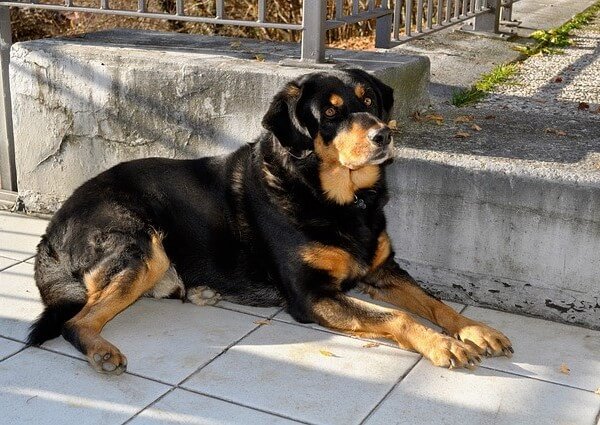
No, it is never a good idea to shave any dog, not just a Rottweiler, as almost all canine experts advise against it.
According to the American Society for the Prevention of Cruelty to Animals (ASPCA), “It is ok to give your long-haired dog…a “summer cut”—trimming their long hair may make it more manageable. However, it is best to allow a professional groomer to perform the haircutting, and never shave down to the skin or try to cut the hair yourself with scissors.”
In the next section, we will explain why.
Shaving Rottweiler is not a good idea!
Shaving your Rottweiler is not advised for many reasons. That’s because shaving exposes your pet’s skin to any harsh element and interferes with how dogs maintain their body temperatures.
In fact, a fully shaved Rottweiler is highly susceptible to heat strokes or developing hypothermia. Shaving can also affect coat patterns and markings, as Shaved Rottweiler hair might not grow back exactly the same again.
14. Spay or neuter your Rottweiler
Spaying or neutering Rottweilers can help reduce shedding. Once your male fur baby is neutered, he is less likely to get into fights and scrapes with other canines.
Besides that, spaying or neutering can also help improve overall health, which adds to coat and hair health.
RELATED: To Neuter or Not to Neuter Your Dog? Pros and Cons
15. Accept Rottweiler hair as a part of your life
It’s not possible to bring home a Rottie without accepting Rottweiler hair as a part of your life. Rottweilers are moderate-to-high shedders and have two heavy shedding spells every year. There is not much that dog lovers can change about that.
But, if you accept your Rottweiler puppy into your life, shedding intensity and all, it will make things easier for you to handle overall. After all, shedding is just one small part of your lovable fur baby.
Do Rottweilers Shed more than German Shepherds?
No, Rottweilers do not shed more than German Shepherds. When you compare Rottweilers to German Shepherds, German Shepherds actually have more hair (or fur) than Rotties and are heavy shedders.
The amount of loose fur German Shepherds generate is much higher when compared to Rottweilers.
Do Rottweilers Shed more than Labs?
Labs and Rottweilers tend to have similar shedding tendencies. Both breeds have medium-length double coats and are high shedders during the shedding season. Labs and Rotties shed moderately all year round.
RECOMMENDED: Rottweiler Lab Mix (Complete Guide)
Related Questions
Rottweilers may seem like high-maintenance dogs, but they’re pretty easy to care for. They become high shedders during heavy shedding season, but dog owners can easily control their shedding by adopting a strict grooming routine, providing nutritious diets, and making sure they have plenty of exercise.
Rottweilers must be bathed once every two months or sooner if they get dirty or start smelling. Occasional bathing helps keep the Rottie’s fur free of dirt, dust, and impurities and this can also help reduce indoor shedding too.
Yes, Rottweilers do make great house dogs. Their size may make people think otherwise, but Rotties are suitable indoor companions thanks to their obedient nature. They’re also great with kids and are highly protective.
Yes, Rottweilers like to cuddle. They are considered lap dogs. They love climbing into their owners’ laps and cuddling. Not many people think of Rotties as cuddly fur babies because of their significant size, but Rottweilers love nothing more than spending time with their family members.
Yes, Rottweilers do drool, but they’re pretty unique about this aspect. Some Rottweilers tend to drool more than others. Generally, male Rotties drool more than females.
Rottweilers shed moderately throughout the year and shed heavily twice a year during spring and fall.
DISCLAIMER: THIS WEBSITE DOES NOT PROVIDE MEDICAL ADVICE
The information, including but not limited to, text, graphics, images and other material contained on this website are for informational purposes only. No material on this site is intended to be a substitute for professional veterinary advice, diagnosis, or treatment. Always seek the advice of your veterinarian or other qualified health care provider with any questions you may have regarding a medical condition.
Resources:
https://www.avma.org/javma-news/2010-03-01/rottweiler-study-links-ovaries-exceptional-longevity

With over five years of specialized experience as an animal writer, my expertise lies in dog nutrition, health, behavior, grooming, and training. I am dedicated to delivering helpful and informative content that caters to the well-being of our furry friends. My primary goal is to empower pet owners with knowledge and ensure our canine companions thrive in health and happiness. In my free time, I love volunteering at local dog rescue centers.




